A Hilarious History of The Ice Axe
When it comes to scaling mountains, having the right tools can mean the difference between conquering a peak and becoming a human popsicle. One such essential tool, the ice axe, has come a long way since its inception, graduating from a humble wooden stick to the sleek, modern-day multi-taskers we see today. So, grab your warmest parka, and join us as we embark on a historical escapade through the chilly, icy timeline of the ice axe and its wily ancestor, the alpenstock.
From our prehistoric predecessors braving the tundra with primitive tools to the daredevil climbers of today, armed with more gadgets than a James Bond movie marathon, we'll traverse the nippy nooks and crannies of ice axe history.
Fancy some ice climbing? Check out our popular beginner's ice climbing course in Norway!
The Pre-Alpenstock Era: A Journey Through Time and Snow
As we embark on our expedition to uncover the roots of the ice axe and alpenstock, we're met with a riveting and intricate tale woven throughout the fabric of early human history. While the exact birth of the first ice axe or primitive alpenstock eludes us, but we can make an educated guess by piecing together clues from the past.

Pre-Historic Humans: The Original Winter Warriors
Envision our early human ancestors, like Homo habilis (2.4-1.4 million years ago), Homo erectus (1.8-1.5 million years ago), and Homo neanderthalensis (400,000 to 40,000 years ago). These tough cookies survived the freezing conditions of the Pleistocene epoch, with many of them living on permanently icy landscapes. Archaeological findings from sites like the Pavlovian site in the Moravian region of the Czech Republic hint that Neanderthals were no strangers to year-round snowy terrain.
Despite their crafty handiwork, such as the Acheulean hand axes made of stone around 1.8 million years ago and the Mousterian and Chatelperronian tools up to 40,000 years ago (including stone blades and scrapers), these prehistoric humans were unable to fashion effective ice axes or alpenstocks using only stone tools.
A Glimmer of Hope: The Copper Age and Beyond
The game changed with the Copper Age (3300 BCE to 1200 BCE), when metal became the latest craze. Although copper wasn't quite as robust as later alloys, it paved the way for further advancements in metallurgy. Unfortunately, it was still too soft to tackle the demands of ice and snow travel.
The Bronze Age however (approximately 3000 BCE to 1200 BCE) brought forth bronze, a sturdier alloy made from copper and tin. At this point more capable tools and weapons, like those found at the Nebra Sky Disk in Germany and the Trundholm Sun Chariot in Denmark (dating back to around 1600 BCE and 1400 BCE, respectively), made their way into the hands of early humans.
Ötzi's Axe: A Frosty Clue to the Past
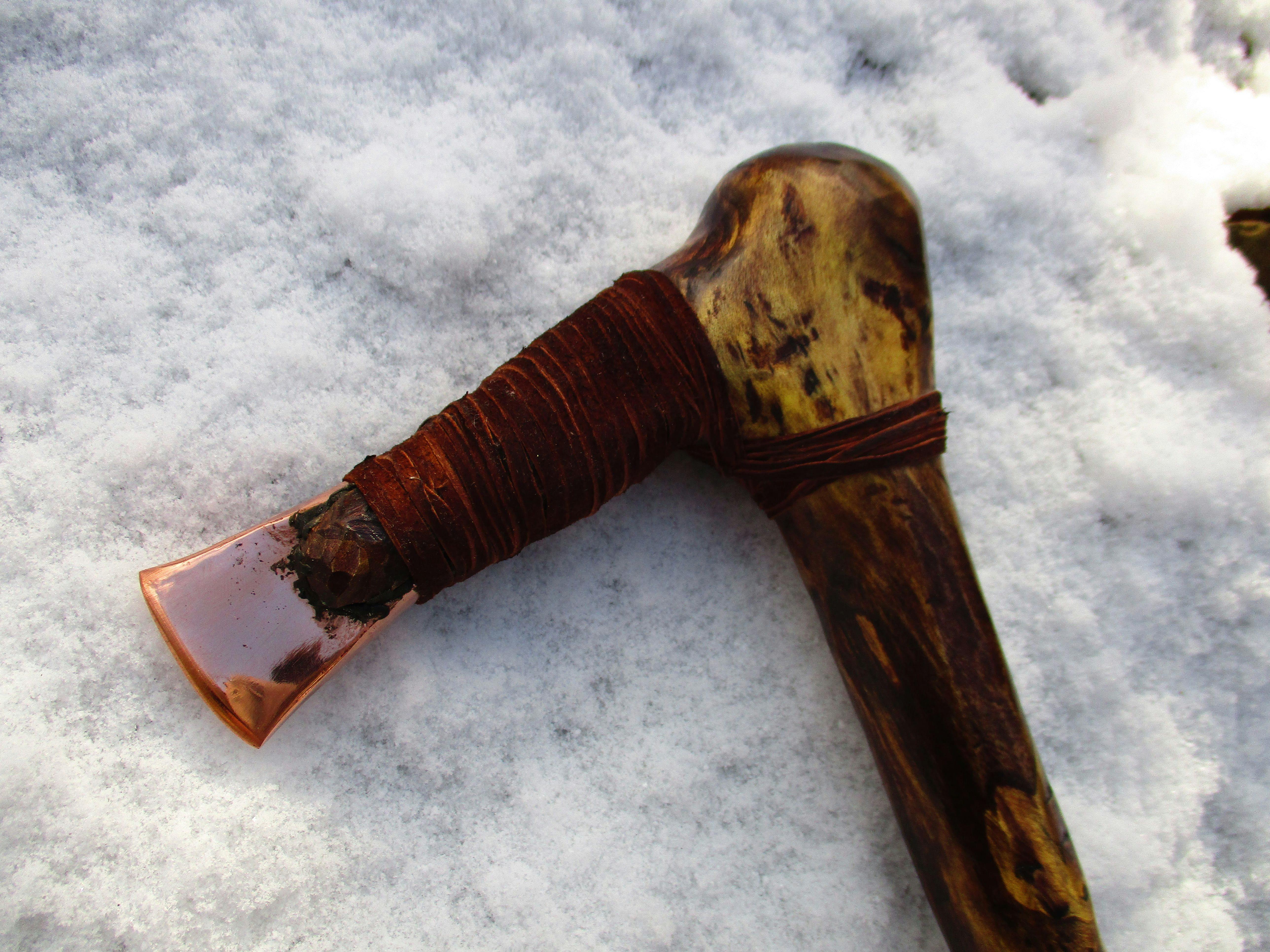
Enter Ötzi, the Iceman, who emerged as the first known glacier-entombed human. Found in the Ötztal Alps between Austria and Italy, this Copper Age fellow had an axe in his possession. But don't be fooled – Ötzi's axe was far from the modern ice axe or alpenstock we know today. It was likely used for tasks like chopping wood or defending against enemies.
However, Ötzi's discovery does suggest that high-altitude shepherds and the like were afoot. People at this time may have developed basic techniques for navigating snowy landscapes, using long sticks for stability. But these early mountain-goers probably didn't face steep, snowy terrain regularly, so the ice axe as we know it wasn't yet a necessity.
There's a good chance that during the Copper Age, some clever individual thought to marry metal and wood to create a tool for traversing snow. This brainchild was likely fueled by the human drive to explore mountains and conquer nature's highest peaks. Studies like Kaplan and Kaplan's "The Experience of Nature: A Psychological Perspective" suggest that humans are drawn to natural environments, including mountains, for their restorative effects on our mental well-being. Regrettably, no record of this early innovation exists, so we must fast-forward to more recent times to find solid evidence of our beloved ice axe and alpenstock.

Latest Deals
The Mighty Alpenstock: A Fashion Statement with a Point
Behold the alpenstock, the cherished precursor to the modern ice axe and the must-have accessory for the trendy mountaineers of the 18th and early 19th centuries. This fabulous wooden pole, donning an iron spike tip, was once the pièce de résistance for anyone daring to sashay into the alpine wilderness.
While the exact origin of the alpenstock remains a mystery, the first reference to this indispensable tool can be found in Swiss theologian Josias Simler's 1574 work De Alpibus Commentarius. He described the use of the alpenstock and primitive crampons on mountain snow expeditions. But it wasn't until Jacques Balmat and Michel-Gabriel Paccard made the first ascent of Mont Blanc in 1786 that the alpenstock became popular.

Originally, alpenstocks were lengthy poles measuring between 1.5 to 2.5 meters and used in conjunction with a small axe to cut steps in ice or hard snow. As the alpenstock evolved, it gradually grew shorter, and inventive mountaineers added new features such as a horizontal metal pick or metal hooks mounted atop. In his Naturhistorisches Alpenreise (1830), Swiss geologist Franz Joseph Hugi, the "father of winter mountaineering," depicted three different types of alpenstocks: those with hooks, picks, and unadorned.
Despite its simple design, the alpenstock was an indispensable tool for Alpine exploration, particularly for crossing glaciers and climbing mountains. Many of the glacier passes in the Alps were first climbed by men wielding alpenstocks, and some surprisingly difficult mountains were also climbed in the pre-ice axe era, such as the Jungfrau and Wetterhorn. The alpenstock was affordable and ubiquitous, providing a modest degree of safety, which helped propel Alpine exploration into the limelight of popularity. It was perfectly normal to see mountaineers climbing major peaks the old-fashioned way, with stick and hatchet, well into the 1860s – retro chic at its finest.
But wait, there's more! The alpenstock wasn't just a practical tool; it was also a symbol of status and prestige. Mark Twain, in his 1880 work A Tramp Abroad, wrote about the importance of branding one's alpenstock with the names of conquered peaks or traversed locales. According to Twain, a man was respected in Switzerland according to his alpenstock. Quite the fashionable statement, don't you think?
The Dawn of the Ice Axe
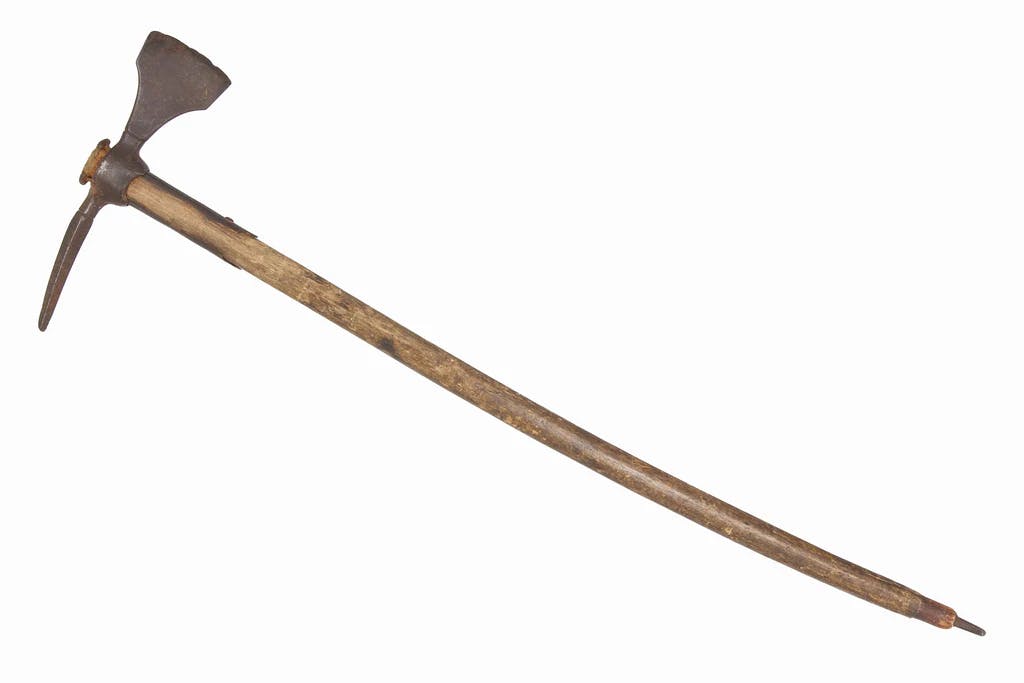
According to Grivel, the earliest manufacturer of ice axes, the first true ice axe was created around 1840. Early ice axes had a vertical adze, which means the cutting edge was aligned with the direction of the shaft, as in a conventional axe. It was like having a really tall hatchet. This design lasted until at least 1860, but eventually, the adze was rotated to the current position, perpendicular to the direction of the shaft – a radical move that sent shockwaves through the alpine community.
In the late 19th century, the typical ice axe shaft measured 120-130 cm in length. But then along came British climber Oscar Eckenstein, who started the trend towards shorter ice axes with a lighter model measuring 85-86 cm. Initially, this innovation was criticized by well-known climbers of the era, including Martin Conway, a prominent member of the Alpine Club. Change is hard, even for people who hang off frozen waterfalls for fun.
By the beginning of the 20th century, the pick lengthened to about twice the length of the adze, and improvements in crampon design and ice climbing technique led to the use of shorter, lighter ice axes that were more appropriate for steeper ice climbs. But it wasn't until the Third American Karakoram Expedition to K2 in 1953 that an ice axe was used to perform a rescue that would become legendary, and dare we say, "ice-olated" in history.
One of the climbers, Art Gilkey, was incapacitated by thrombophlebitis, and the other climbers attempted to rescue him by lowering him down the mountain by rope, wrapped in a sleeping bag. While crossing a steep ice sheet, a slip caused Gilkey and five other climbers to begin falling down a steep slope. But climber Pete Schoening managed to wedge his ice axe alongside a boulder and belay the roped climbers, saving their lives – talk about being cool under pressure. Gilkey, unfortunately, later in the same descent was swept away by an avalanche. Schoening's ice axe is now on display at the Bradford Washburn American Mountaineering Museum in Golden, Colorado – a chilling reminder of the heroic act.
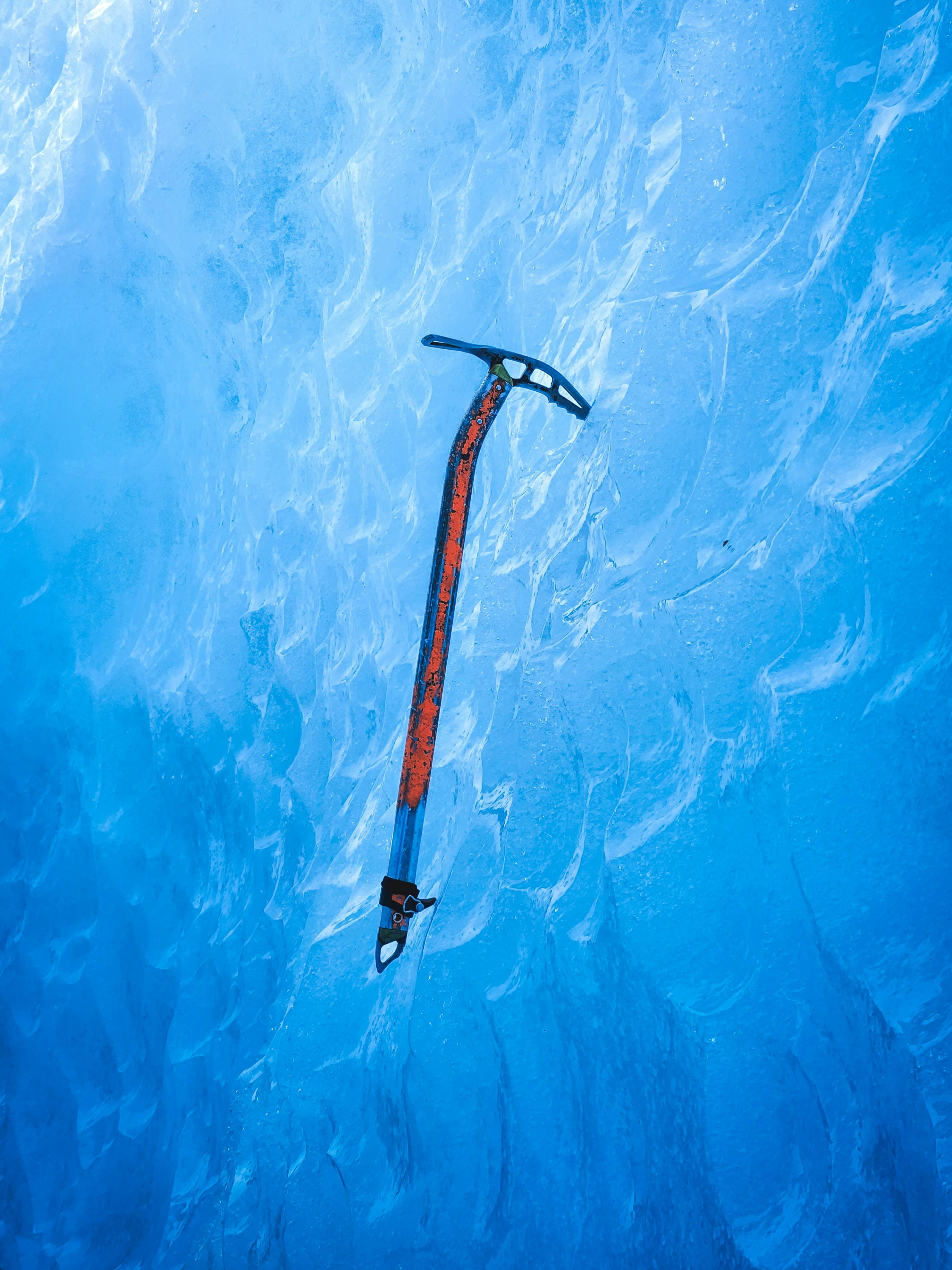
In 1966, Yvon Chouinard led a significant redesign of ice axes, working with initially reluctant manufacturer Charlet to develop a 55-centimetre-long ice axe with a dramatically curved pick. Chouinard believed that "a curve compatible with the arc of the axe's swing would allow the pick to stay put better in the ice. I had noticed that a standard pick would often pop out when I placed my weight on it." Chouinard's idea worked and began a period of innovation in ice axe design – or as we like to call it, the "curve-a-lution."
In 1978, the Safety Commission of the Union Internationale des Associations d'Alpinisme (UIAA) established formal standards for ice axe safety and performance. This led to the replacement of the traditional wooden shaft by metal alloy shafts
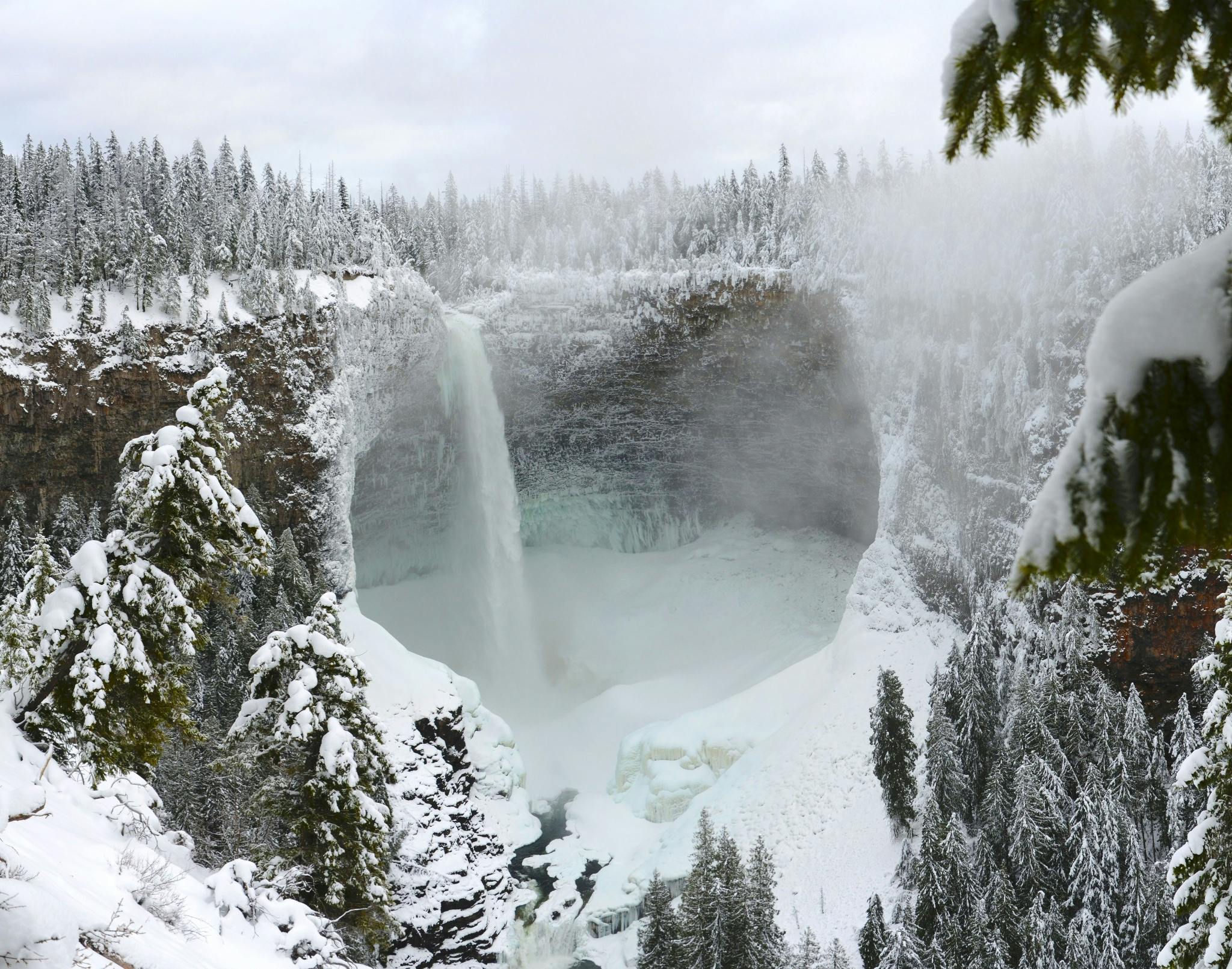
More recently, Petzl's Nomics have become the gold standard in modern ice axes, and for good reason. They are designed with steep ice and mixed climbing in mind, making them perfect for the most challenging routes. The first version of the Nomic was released in 2008 and introduced the concept of leashless ice tools, which revolutionized the sport. The Nomic has since set a new standard for both alpine and ice tools, and an updated version was released in 2012.
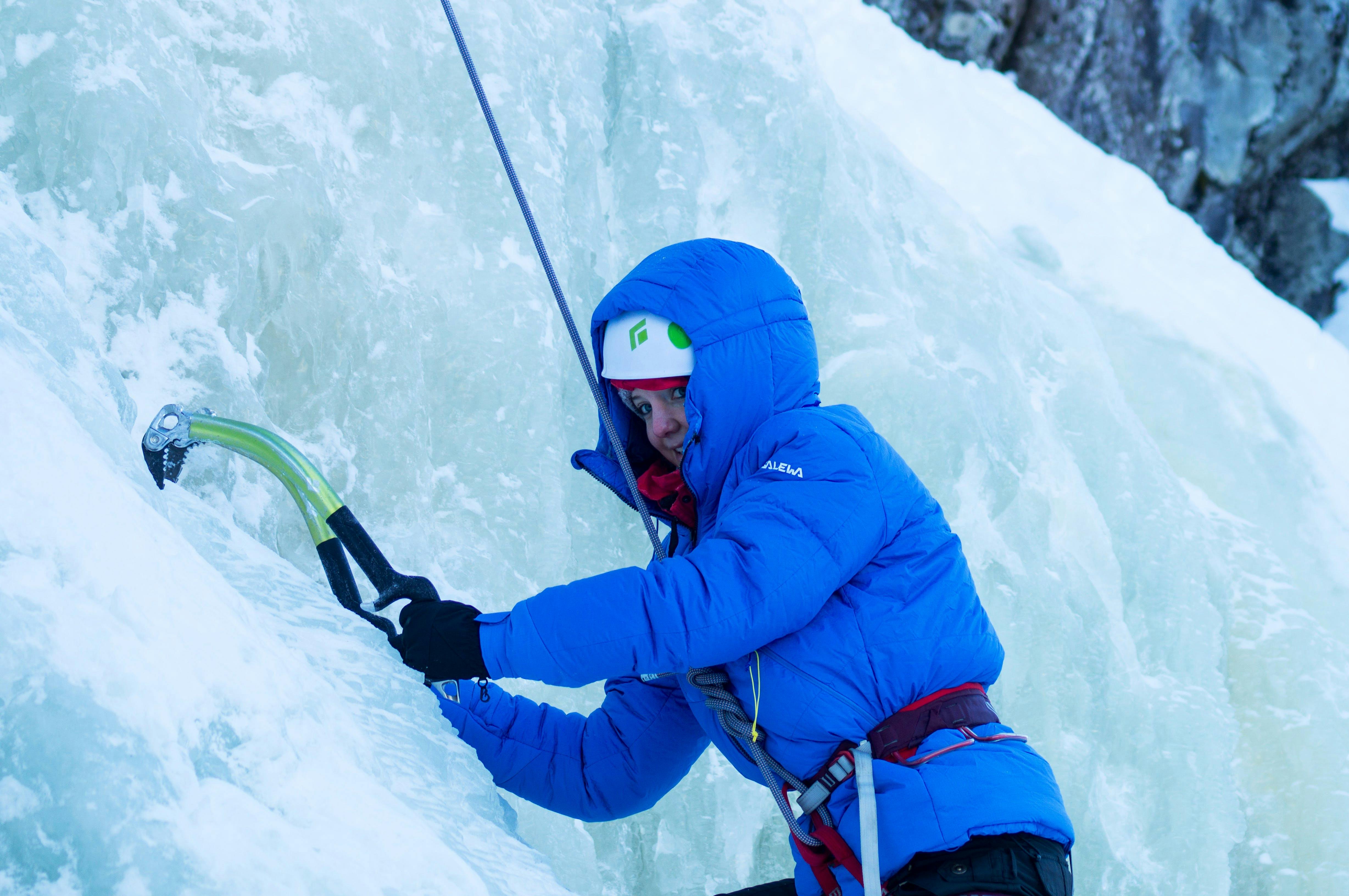
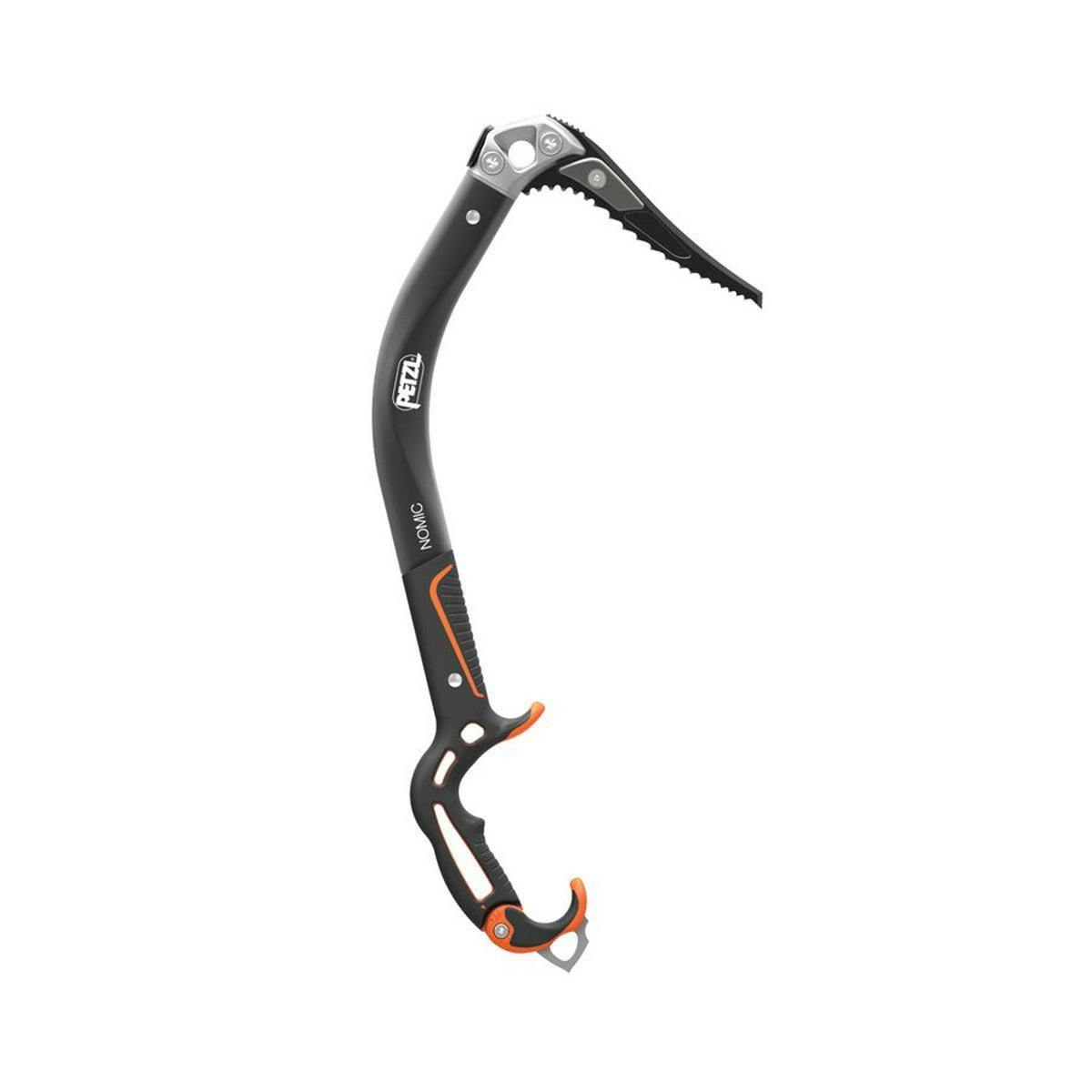
The Nomic has been praised for its balance, versatility, and ease of use. Its curved shaft provides a natural swing, making it easier to use on steep ice. Its adjustable grip makes it comfortable to use for extended periods, while its serrated blade provides additional support and traction. With these features, the Nomic has become a favorite among ice climbers and has helped to push the sport to new heights.
Thanks for reading - if if you want to try out ice climbing yourself, why not check out our Beginners Ice Climbing trip in Norway! Or if you already have the basics, maybe the Ice Climbing Improver course is for you. Until next time folks!
More interesting insights:
Find your next adventure
Why Skyhook?
Join over 27,000 Skyhook adventurers who've used our platform to book directly with our vetted local guides, at local prices (we never markup).
Expert Local Guides
Experienced local guides, handpicked by us.
Best Prices
Never pay a markup on the local guide's price.
Exclusive Club
Earn loyalty rewards every time you travel.
Great Social Vibes
Small group tours provide a richer experience.
Stellar Feedback
Over 3,000 reviews, average of 4.9/5 stars.









